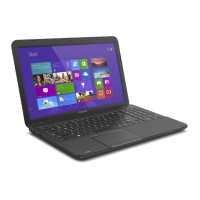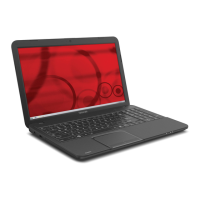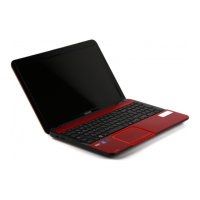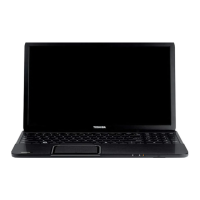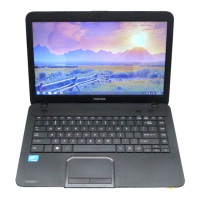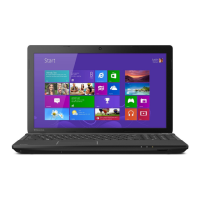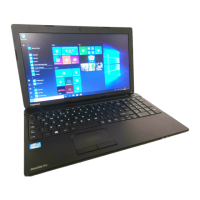
Do you have a question about the Toshiba Satellite Pro C850 and is the answer not in the manual?
| Battery | 6-cell Lithium-Ion |
|---|---|
| Optical Drive | DVD SuperMulti Drive |
| Wireless | 802.11b/g/n |
| RAM | Up to 8GB DDR3 |
| Storage | 500GB HDD |
| Display | 15.6 inch, 1366 x 768 pixels |
| Graphics | Intel HD Graphics |
| Operating System | Windows 7 |
| Weight | 2.3 kg |
| LAN | 10/100 Mbps Ethernet |
| Webcam | Integrated webcam |
| Ports | USB 2.0, USB 3.0, HDMI, VGA, headphone/microphone combo jack, RJ-45 |
| Processor | Intel Core i3/i5/i7 (varies by model) |
Instructions for proper disposal of products and batteries in EU states.
Lists manufacturers of optical disc drives used in the computer.
Explains keyboard keys and how to perform key combinations.
Ensure proper airflow and a suitable environment for computer operation.
Avoid stress injuries, heat issues, and consider mobile phone interference.
Lists included hardware and documentation for computer setup.
Covers connecting power, opening display, powering on, and initial startup.
Explains shutting down, Sleep Mode, Hibernation Mode, and restarting.
Identifies components on the front, left, right, back, and underside of the computer.
Explains status indicators and identifies ports on the left side.
Details all ports and features on the right side of the computer.
Details battery pack, locks, slots, and vents on the back and underside.
Details antennas, microphone, web camera, and keyboard when the display is open.
Describes key internal parts like CPU and storage.
How to use the touch pad and keyboard, including special keys.
Loading, ejecting, and writing to CD/DVD/Blu-ray discs.
Using playback software and understanding 3D playback.
Covers Wireless LAN, Bluetooth, and LAN connection setup.
Installing optional devices and managing memory media.
Describes essential utilities for system management and diagnostics.
Explains utilities for passwords, hardware settings, and accessibility features.
Details hot keys, power saving, and special computer features.
Information on system recovery, media creation, and software restoration.
Explains power states based on AC adaptor and battery status.
Covers battery types, care, charging, and maximizing life.
Details Shut Down, Sleep, and Hibernation modes.
Guidelines for problem-solving and preliminary checks.
Solutions for common problems with power, battery, RTC, keyboard, display, HDD, and optical drives.
Solutions for memory card, touch pad, USB, LAN, and wireless issues.
Details computer dimensions and operating environmental requirements.
Technical details on AC adaptor and computer power input.
Technical details of the VGA port pin configuration.
Specifications for AC power cords and their regional compatibility.
List of agencies certifying power cords for different regions.
Factors affecting CPU performance, 64-bit computing, memory, battery life, and HDD capacity.
Details on LCD screen characteristics and wireless LAN speed.
Covers Wireless LAN and Bluetooth compatibility and standards.
Warnings about interference, health, and regulatory compliance across regions.
